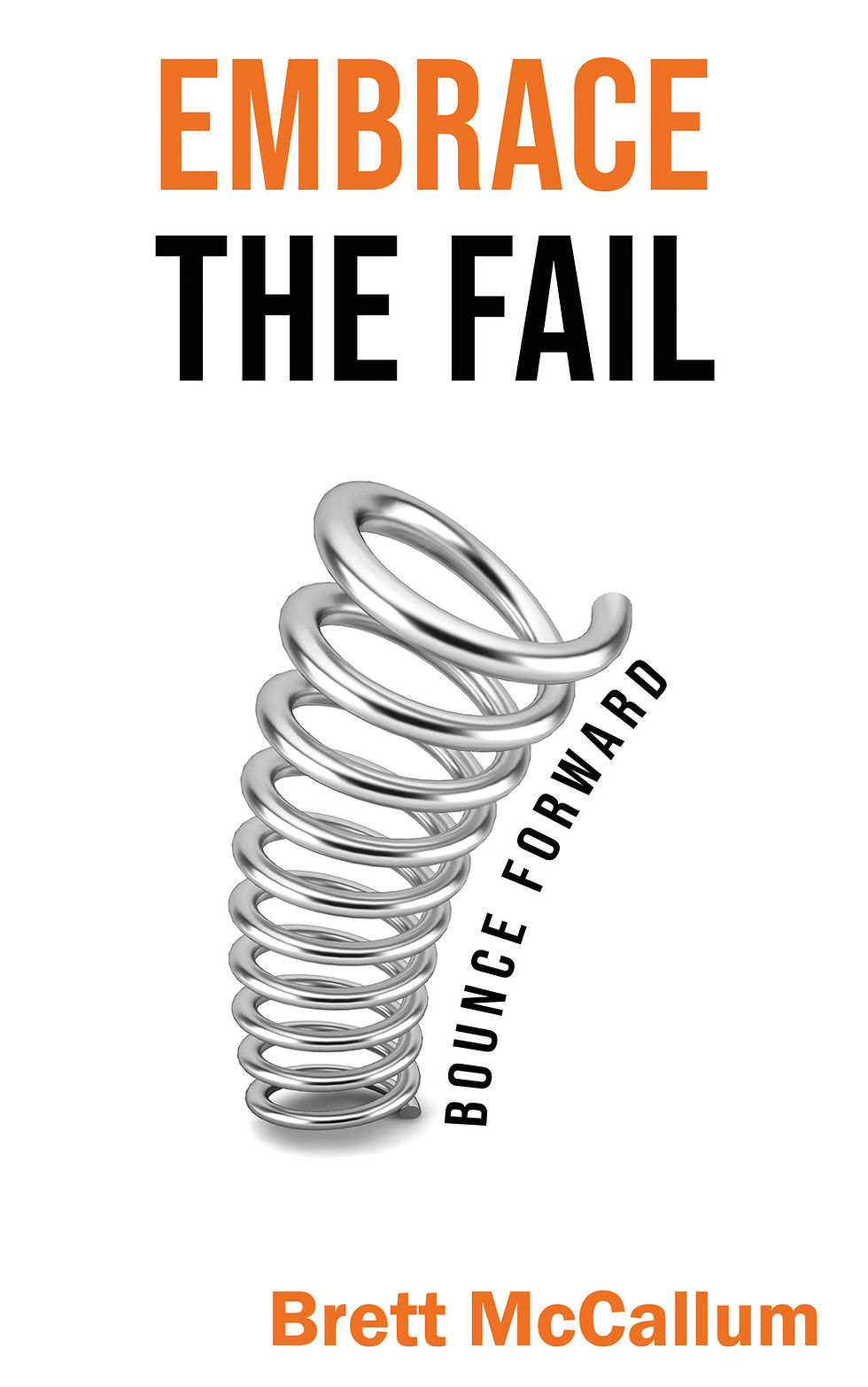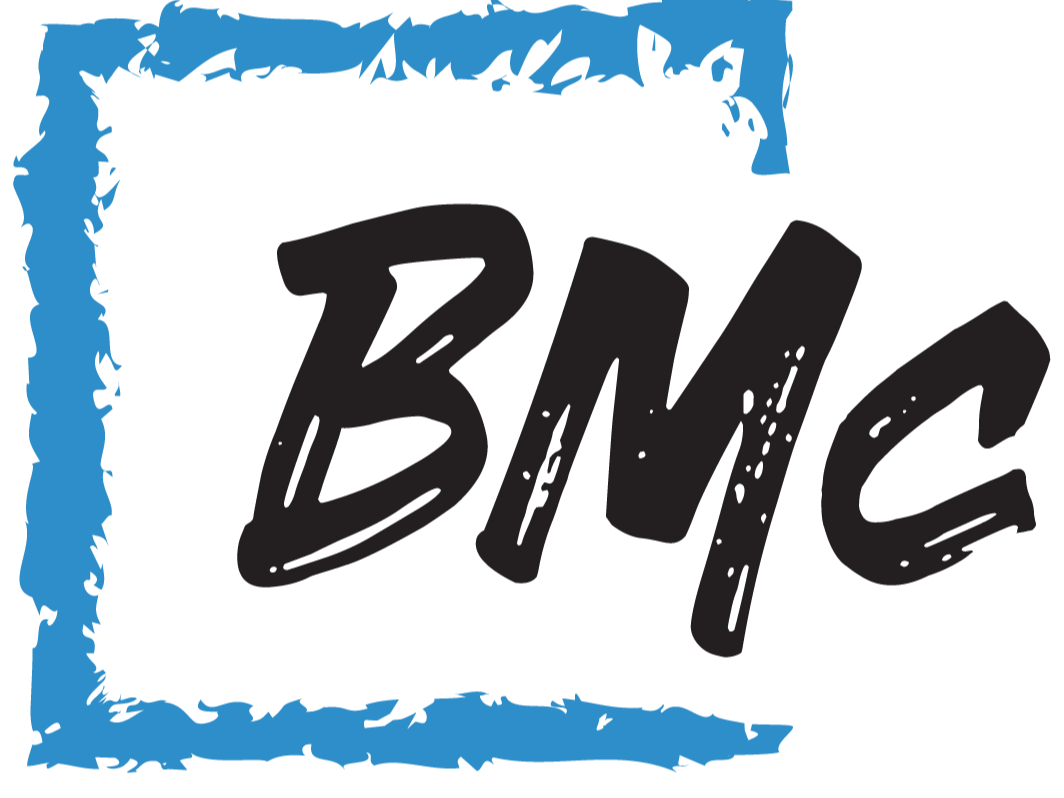Why Failure Is the Secret Ingredient to Success: Lessons from Brett McCallum
- Brett McCallum
- Jul 1
- 6 min read
Table of Contents
Introduction: The Myth of Overnight Success
My Story: Failing Forward
The Science and Psychology of Learning from Failure
The Real Cost of Avoiding Failure
Practical Steps to Embrace Failure
Real-World Examples: Legends Who Failed First
The Bounce: How to Get Up When You’re Down
Building a Culture That Embraces Failure
FAQ: Failure, Success, and the Entrepreneur’s Journey
Conclusion: Your Turn to Embrace the Fail
1. Introduction: The Myth of Overnight Success
If you Google “Brett McCallum,” you’ll find a story that’s anything but typical. I’m not the guy who got it all right the first time. I’m the guy who failed, learned, and bounced back—again and again. And I’m here to tell you: failure isn’t just part of the journey—it’s the secret ingredient to real, lasting success.
We live in a world obsessed with winning. Social media is full of highlight reels, not the behind-the-scenes grind. But the truth is, every successful entrepreneur, athlete, or artist you admire has a trail of failures behind them. The difference? They learned to embrace the fail.
2. My Story: Failing Forward
Let’s get personal. I failed high school. I dropped out of uni after a day. I tried my hand at trades, only to discover I was more afraid of spiders than I was of failing. I’ve started businesses that soared, and others that crashed and burned. I retired at 31, only to lose it all and start again.
But here’s the thing: every time I failed, I learned something I couldn’t have learned any other way. And every time I got back up, I bounced a little higher.
I’ve been called a serial entrepreneur, a mentor, and even a “billionaire-to-be.” But if you ask me what’s shaped my career the most, it’s not the wins—it’s the failures.
The High School “Fail”
I wasn’t a bad student, but I wasn’t interested in what school was selling. I cruised through, focused on sport and mates, and when the final results came in, I failed. In the eyes of the education system, I was a write-off. But that failure taught me something school never could: your worth isn’t defined by a number on a piece of
paper.
The Uni Dropout
I lasted one day at university. I realised quickly that it wasn’t for me. Some people saw that as quitting. I saw it as listening to my gut. That decision set me on a path of real-world learning—jobs, trades, and eventually, entrepreneurship.
The Entrepreneurial Rollercoaster
I’ve built businesses from scratch, lost them, and built them again. I’ve been kicked out of my own company, made and lost fortunes, and learned that the only constant in business is change—and the only way to survive is to keep learning.
3. The Science and Psychology of Learning from Failure
It’s not just my story—science backs this up. Studies show that people who reflect on their failures, rather than ignore or hide from them, are more likely to succeed in the long run. Failure forces us to adapt, to get creative, and to build the kind of resilience you can’t fake.
Why We Fear Failure
Humans are wired to avoid pain. Failure hurts—emotionally, financially, sometimes physically. But avoiding failure means avoiding growth. The most successful people aren’t the ones who never fail—they’re the ones who learn to fail well.
The Growth Mindset
Psychologist Carol Dweck coined the term “growth mindset”—the belief that abilities can be developed through dedication and hard work. People with a growth mindset see failure as a chance to learn, not a reason to quit.
The Power of Reflection
Reflection is the bridge between failure and learning. When you take time to ask, “What went wrong? What can I do differently?” you turn setbacks into stepping stones.
4. The Real Cost of Avoiding Failure
What happens if you never fail? You never try. You never stretch. You never grow.
The Comfort Zone Trap
Staying safe feels good in the short term, but it’s a recipe for long-term regret. The comfort zone is where dreams go to die.
Missed Opportunities
Every successful person has a story about the opportunity they almost missed because they were afraid to fail. The only way to guarantee failure is to never try.
The Gonna Syndrome
I call them “Gonnas”—people who are always “gonna” do something, but never actually do it. Don’t be a Gonna. Be a Do-er.
5. Practical Steps to Embrace Failure
So how do you actually “embrace the fail”? Here’s what’s worked for me—and for the hundreds of entrepreneurs I’ve mentored:
1. Own Your Mistakes
Don’t blame the market, your team, or bad luck. Look in the mirror and say, “I stuffed that one up.” When you take responsibility, you take back control.
2. Reflect, Don’t Ruminate
Reflection is about learning; rumination is about beating yourself up. Ask yourself: What went wrong? What can I do differently next time? Then move on.
3. Share Your Story
Talk about your failures. Not only does it help you process them, but it also helps others see that they’re not alone. Vulnerability is a strength, not a weakness.
4. Bounce—Don’t Stay Down
The difference between successful and unsuccessful people isn’t that one group never fails. It’s that successful people get back up—every single time.
5. Celebrate the Lessons
Every failure is a lesson in disguise. Celebrate what you’ve learned, and use it as fuel for your next attempt.
6. Real-World Examples: Legends Who Failed First
Some of the world’s most successful people failed spectacularly before they made it big. Michael Jordan was cut from his high school basketball team. Steve Jobs was fired from his own company. Richard Branson’s first ventures flopped.
Michael Jordan: The Power of Persistence
Jordan missed more than 9,000 shots in his career. He lost almost 300 games. Twenty-six times, he was trusted to take the game-winning shot—and missed. “I’ve failed over and over and over again in my life,” he said. “And that is why I succeed.”
Steve Jobs: Reinvention After Rejection
Jobs was fired from Apple, the company he founded. Instead of giving up, he started new ventures, learned from his mistakes, and eventually returned to lead Apple to unprecedented success.
Richard Branson: Learning from Losses
Branson’s first business ventures—selling Christmas trees and budgerigars—failed. Virgin Cola flopped. But Branson kept trying, kept learning, and built a global empire.
7. The Bounce: How to Get Up When You’re Down
I call it “The Bounce.” It’s the ability to get back up after a fall, to learn from your mistakes, and to keep moving forward.
The Anatomy of a Bounce
Acknowledge the Fall: Don’t pretend it didn’t happen.
Reflect and Learn: What went wrong? What can you do differently?
Plan Your Next Move: Set a new goal, make a new plan.
Take Action: Get back in the game.
Celebrate the Comeback: Every bounce is a victory.
My Biggest Bounces
I’ve bounced back from business failures, personal setbacks, and moments when I thought I’d lost it all. Each time, I learned something new, grew stronger, and came back better.
8. Building a Culture That Embraces Failure
If you’re a leader, it’s your job to create a culture where failure is seen as a learning opportunity, not a reason for shame.
Encourage Experimentation
Reward people for trying new things, even if they don’t work out.
Share Your Own Failures
Be open about your mistakes. It sets the tone for your team.
Focus on Learning, Not Blame
When something goes wrong, ask, “What can we learn?” not “Who’s to blame?”
9. FAQ: Failure, Success, and the Entrepreneur’s Journey
Q: How do I know if I’m learning from failure or just repeating mistakes?A: Reflection is key. If you’re making the same mistake over and over, it’s time to step back and ask, “What am I missing?”
Q: How do I bounce back from a really big failure?A: Start small. Set a new, achievable goal. Take one step at a time. Celebrate progress.
Q: How do I help my team embrace failure?A: Lead by example. Share your own failures, focus on learning, and reward effort, not just results.
10. Conclusion: Your Turn to Embrace the Fail
If you’re reading this and you’ve failed—good. You’re in the right place. The only real failure is never trying, or never learning.
Next time you hit a wall, remember: failure is the secret ingredient to success. Own it, learn from it, and get ready to bounce higher than ever before.
If you want more stories, tips, and honest advice on business, life, and bouncing back, stick around. I’ve got plenty more to share.




Comments